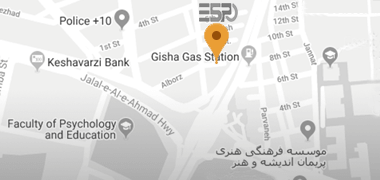
طراحی یک مرکز مراقبتهای پوستی (Skin Care Center) و نمایندگی فروش محصولات آرایشی بهداشتی Thalgo باید به گونهای باشد که حس لوکس بودن، آرامش و ارتباط با طبیعت را که از ویژگیهای برند Thalgo است، به خوبی منتقل کند. این طراحی باید نه تنها از نظر زیباییشناختی جذاب باشد، بلکه تجربهای فوقالعاده برای مشتریان ایجاد کند که هم با خدمات مراقبتی و هم با خرید محصولات، یکپارچه و هماهنگ باشد.
1. طراحی داخلی و فضاهای مرکز مراقبتهای پوستی
• الهام از دریا و طبیعت: Thalgo به دلیل استفاده از مواد دریایی در محصولاتش، معمولاً از عناصر طبیعی مانند جلبکها، آب و مواد معدنی دریایی الهام میگیرد. این موضوع باید در طراحی داخلی مرکز مراقبتهای پوستی نیز بازتاب یابد. استفاده از رنگهای ملایم آبی، سبز دریایی، سفید و خاکستری روشن، حس آرامش دریا را تداعی میکند.
• متریالهای طبیعی: استفاده از متریالهایی مانند چوب روشن، سنگهای طبیعی و شیشه میتواند ارتباط با طبیعت و دریا را تقویت کند. این متریالها باید با دقت انتخاب شوند تا حس لوکس بودن و طبیعی بودن فضا را تقویت کنند.
• نورپردازی ملایم: نورپردازی باید آرامشبخش و نرم باشد. استفاده از نورهای مخفی، لامپهای سقفی با نور ملایم و نور طبیعی تا حد ممکن، میتواند محیطی دلپذیر و آرامشبخش را ایجاد کند که برای خدمات مراقبت از پوست مانند ماساژ و درمانهای پوستی ایدهآل است.
• فضاهای تفکیکشده: فضاهای مرکز باید شامل بخشهای مختلفی باشد که هرکدام کاربری خاص خود را دارند:
• بخش مشاوره و پذیرش: طراحی این بخش باید گرم و خوشایند باشد تا مشتریان با احساس آرامش وارد شوند. میز پذیرش با طراحی مینیمال و استفاده از نمادهای مرتبط با برند Thalgo مثل لوگو و رنگهای برند میتواند حس اعتماد و حرفهای بودن را به مشتریان منتقل کند.
• اتاقهای مراقبت پوستی: این اتاقها باید خصوصی، آرام و مجهز به تجهیزات پیشرفته باشند. تختهای راحت، نور ملایم و موسیقی آرامشبخش به ایجاد فضایی مناسب برای درمانهای پوستی کمک میکند.
• فضای انتظار: برای مشتریانی که منتظر خدمات هستند، فضایی آرامشبخش با صندلیهای راحت، نور طبیعی و گیاهان طبیعی فراهم شود.
2. طراحی نمایندگی فروش محصولات Thalgo
• نمایش محصولات: محصولات آرایشی و بهداشتی Thalgo باید به شکل جذابی به نمایش گذاشته شوند. قفسهها و استندهای شیک و مدرن با طراحی ساده و مینیمال که تمرکز روی محصولات را برجسته میکند، میتواند حس لوکس بودن و حرفهای بودن برند را تقویت کند.
• رنگ و تم بصری: استفاده از همان رنگها و طراحی الهامگرفته از دریا (آبی، سفید و سبز دریایی) برای بخش فروش نیز توصیه میشود. این رنگها باید در کنار متریالهای طبیعی مثل چوب و سنگ به کار بروند تا حس یکپارچگی با مرکز مراقبتهای پوستی ایجاد شود.
• آینهها و نورپردازی: در بخش فروش، وجود آینههای بزرگ و نورپردازی مناسب برای آزمایش محصولات مانند کرمها و لوازم آرایشی ضروری است. نور باید طوری باشد که رنگ و بافت محصولات را به خوبی نشان دهد و تجربه مشتریان از تست محصولات بهبود یابد.
• فضای آزمایش محصولات: ایجاد فضایی برای مشتریان که بتوانند محصولات را تست کنند، اهمیت بالایی دارد. این فضا باید آرام و دلپذیر باشد تا مشتریان به راحتی بتوانند محصولات را روی پوست خود آزمایش کرده و تجربه خرید دلپذیری داشته باشند.
3. جزئیات طراحی خاص Thalgo
• استفاده از تصاویر و نمادهای برند: در طراحی مرکز، استفاده از تصاویر مرتبط با دریا و طبیعت دریایی که با برند Thalgo همخوانی دارد میتواند به مشتریان حس ارتباط عمیقتری با محصولات و فلسفه برند بدهد. همچنین، لوگو و نشان تجاری Thalgo باید به شکلی ظریف در بخشهای مختلف فضا دیده شود.
• پخش رایحههای دریایی: یکی از راههای جلب توجه مشتریان و ایجاد تجربهای متفاوت، استفاده از رایحههای مرتبط با دریا است. این رایحهها میتوانند در بخشهای مختلف مرکز و فروشگاه پخش شوند تا حس آرامش و تازگی دریا تداعی شود.
• موسیقی آرامشبخش: در تمامی بخشها، از جمله فروشگاه و اتاقهای مراقبتی، موسیقی آرامشبخش و ملایم که حس طبیعت و آرامش دریا را به ذهن میآورد، باید پخش شود.
4. رعایت استانداردهای بهداشتی و پایداری
• مراقبت از بهداشت: طراحی باید به گونهای باشد که فضا به راحتی قابل تمیز کردن باشد. این موضوع به ویژه در اتاق هایی که مراقب های پوستی انجام می شود اهمیت ویژه ای دارد.
• استفاده از مواد سازگار با محیط زیست: از آنجا که Thalgo بر اساس فلسفه طبیعت و پایداری فعالیت میکند، استفاده از مواد سازگار با محیط زیست در طراحی داخلی و دکوراسیون اهمیت دارد.




















